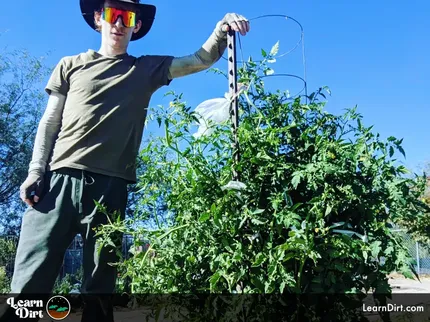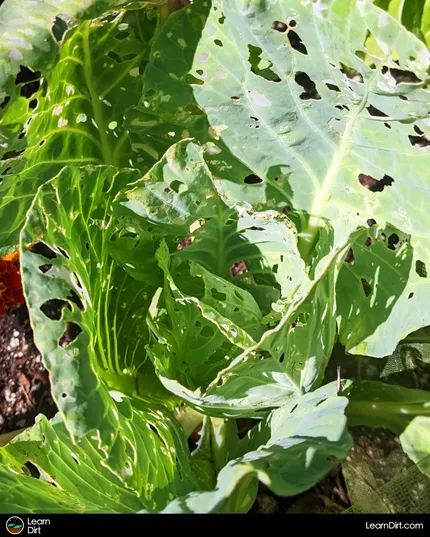Table of Contents
- Haploid (1 Chromosome Pair)
- Diploid (2 Chromosome Pairs)
- Triploid (3 Chromosome Pairs)
- Tetraploid (4 Chromosome Pairs)
* Our articles never contain AI-generated slop *
What exactly is a haploid, a diploid, a triploid, or even a tetraploid watermelon anyway?
These terms refer to the number of sets of chromosomes in a melon.

These weigh under 10 lbs and can hang on a trellis unlike the big boys.
Haploid (1 Chromosome Pair)
When only 1 set of chromosomes is present, we call this haploid. For watermelons, that means 11 chromosomes.
Disclaimer: This post may contain affiliate links. Refer to the privacy policy for more information.
1 set of chromosomes is not enough to produce a watermelon, however it is the amount necessary for a gamete (pollen or ovules).
When the 11 chromosomes in pollen cross with the 11 chromosomes in ovules, a diploid seed is formed with 2 pair of 11 chromosomes (22 total).
This is similar to humans where 23 chromosomes from a haploid sperm, and 23 chromosomes from a haploid egg cross to create an embryo with the full 46 chromosomes typically found in most humans.
Diploid (2 Chromosome Pairs)
When 2 sets of chromosomes are present, this is called a diploid.
For watermelons, 2 chromosome sets means 22 total chromosomes. This is the typical amount for most seeded watermelons.
Diploids melons are fertile and like other monoecious plants they may self-pollinate or cross-pollinate with other diploid melons.
Join The Grower's Community
Find your people.
Your voice matters here 🌱
Check It Out!
When diploids are pollinated, they produce viable seeds which can be saved and planted to grow more diploids.
Triploid (3 Chromosome Pairs)
When 3 sets of chromosomes are present, a triploid is produced.
In watermelons, this means 33 chromosomes. Fruits like this are artificially created, and are considered to be "seedless". If you've ever wondered how seedless watermelons are produced, this is how.
In reality, triploid melons do produce seeds but they are undeveloped, infertile seeds which are usually white and unnoticeable enough that they receive the moniker "seedless". These infertile undeveloped seeds cannot be used to grow more watermelons.
Triploid melons cannot produce viable pollen, and therefore require a nearby diploid for pollination. If you plant to grow a triploid "seedless" melon variety, a ratio of one diploid to every few triploids is generally used. Each diploid can pollinate a few triploids, and both are required to produce triploid fruits.
It's worth noting that triploid melons also generally produce fewer fruit than diploids, and may require more care to grow.
A successful grow-out of triploid and diploid plants together in the same space will produce both seedless and seeded melons. Consider tagging your plants so you know which is which.
Tetraploid (4 Chromosome Pairs)
When 4 sets of chromosomes are present, it's a tetraploid.
Tetraploids are generally grown by breeders and are rarely grown by gardeners and farmers. This is because tetraploids are utilized in the breeding of triploids. Here's how it works:
- The growth tips of a diploid melon plant are treated with colchicine, which prevents chromosome separation during mitosis.
- As the treated growth tips grow, those parts of the diploid become tetraploid. This results in a chimera - a plant with sections of different ploidy.
- Tetraploid sections of the plant are identified, often by their thicker stems and leaves.
- Cuttings are taken from the tetraploid sections and rooted to create wholly tetraploid plants.
- Once the plant is tested and confirmed to be tetraploid, it is grown for a few generations in order to create a stable and viable tetraploid line.
- Once stabilized, tetraploid lines are used to breed triploid "seedless" melons.
Some of the earliest evidence of watermelon cultivation comes from Egypt during the time of the pharaohs. Their seeds, as well as hieroglyphs depicting them have been found in tombs as old as 5,000 years!
That's all for now, thanks for reading!
If you have any questions, comments, or would like to connect with fellow gardeners, head on over to the forum and post there.





















